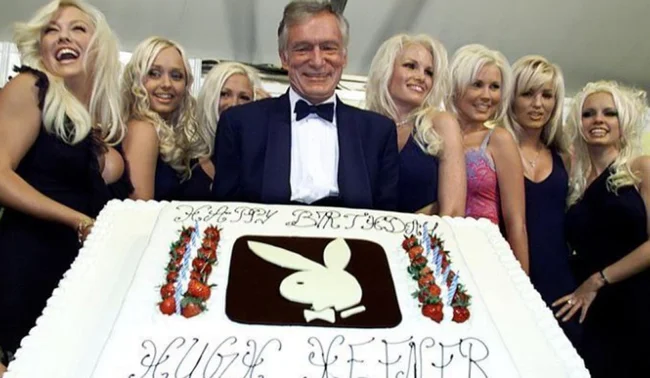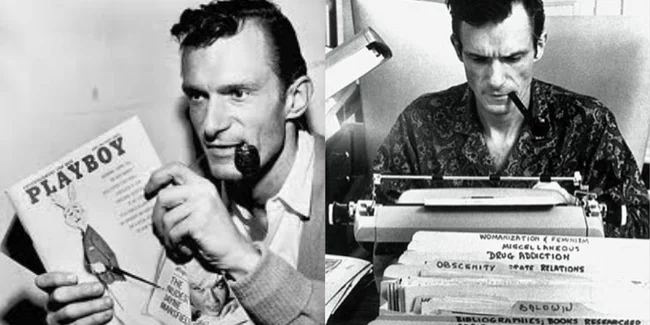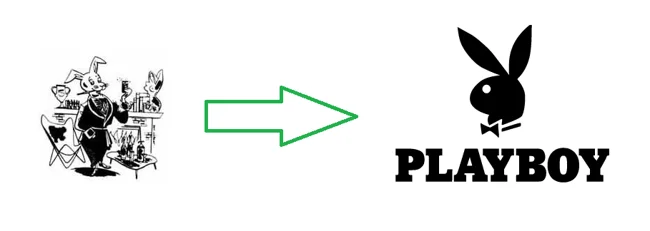Did you know why Hugh Hefner made a bunny the logo of Playboy magazine? (6 photos)
Hugh Hefner, the founder of the iconic men's magazine Playboy, no matter how you view him, left an indelible mark on history as a pioneer of the 20th century sexual revolution and a fighter for civil rights. Its iconic rabbit logo has become one of the most recognizable brands in the world, on par with such famous companies as Apple, Nike or Coca-Cola. 
But do you know why rabbit?
First, let's briefly: why did Playboy magazine become so popular? 
Hefner developed the magazine from scratch in the early 1950s as a finely tuned, carefully engineered product with a very clear consumer base.
Hefner's vision of Playboy was to be a men's magazine unlike anything else on the market. It had to be a magazine with a unique conceptual idea: to provide its reader not just another magazine with naked girls on every page, but a unique read that satisfies the natural male interest in (no doubt) sexual topics, but also in politics, literature, philosophy, various life advice and interviews with the most influential people in the world.
Playboy magazine perfectly combined all these themes and truly brought about the sexual revolution in the 20th century, and also influenced topics such as civil rights.
For decades, Playboy has been at the forefront of fiction, music, fashion and human rights. It was in this magazine that some of the "best literary and journalistic work in history" was published. Interviews with Ayn Rand and Martin Luther King Jr., fiction by Vladimir Nabokov, and Ray Bradbury's acclaimed anti-censorship novel Fahrenheit 451, published in three parts: Playboy magazine published it all.
Initially, the logo for Playboy magazine was supposed to be a deer. 
It took a team of artists, creatives and business partners to create Playboy, including art director Arthur Paul.
In a conversation with Paul, Hefner said that the logo for the magazine should be an antlered buck deer, personifying the wild nature of their future magazine. Paul agreed with Hefner's original concept and drew a deer logo for a magazine called "Stag Party" to be placed at the end of articles as a branding point.
As Illinois Tech Magazine wrote, the Playboy team decided to move away from their original name Stag Party because of another existing magazine called Stag. The magazine was a nature magazine, and artist Arthur Paul told Hugh Hefner that "it was crazy" to launch his own publication with a similar name. At the next meeting, Hefner, Paul and Playboy executives brainstormed about other "frisky and playful" animals besides deer. The choice fell on a rabbit, which carried a deliberate sexual connotation, since rabbits are known for their rampant reproduction, and thus had to suit its readers.
This is how the famous rabbit logo appeared. 
However, few people know that Paul originally drew a rabbit dressed in a tuxedo, holding a glass and casually smoking a cigarette. It was surrounded by wooden pipes, statues and trophies. But Hefner thought the logo was too busy, and it took Paul only 30 minutes to redesign it into that minimalist black and white logo with a rabbit in a bow tie, which has never been redesigned since then and still remains one of the most popular logos in the world. 
Hefner also explained in an interview with Italian journalist Oriana Fallaci why the Playboy logo could be associated not only with active men, but also with women:
The symbolism of the rabbit in America has sexual significance due to their high fertility; and I chose it because it is an active animal, very fast, cute, shy, lively, jumping. You want to play with him, pet him. The girl looks like a rabbit. She is cheerful, humorous, shy and sweet. 
Playboy was never interested in mysterious, femme fatales; it chose girls who were a little shy, like a bunny, playful and happy. Mystery women, according to Hefner, always had something dirty in their souls, and Playboy girls were supposed to be like cute bunnies, pure at heart, clear and sincere, they did not hide anything.
After creating the world famous Playboy bunny logo, Arthur Paul became the magazine's vice president. He left this position in 1982 to lecture. He died in 2018, a year after Hefner.
Meanwhile, the Playboy bunny logo lives on—as strong, enduring, and iconic as ever.





















